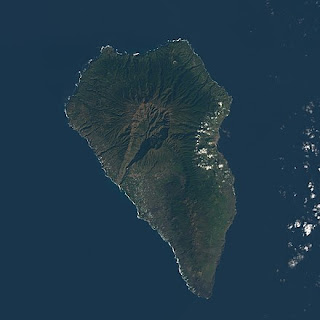About that Volcanic Eruption in the Canary Islands
When I read "La Palma" the story got my attention.
Some years ago there was a documentary about a mega-tsunami threat to the US eastern seaboard resulting from a huge slide into the sea at the seismically volatile La Palma. The documentary was based on a research paper by two American geophysicists, Steven Ward and Simon Day.
Steven N. Ward and Simon Day in a 2001 research article proposed that a Holocene change in the eruptive activity of Cumbre Vieja volcano and a fracture on the volcano that formed during an eruption in 1949 may be the prelude to a giant collapse. They estimated that such a collapse could cause tsunamis across the entire North Atlantic and severely impact countries as far away as North America.Their theory was that the Cumbre Vieja volcano could trigger an en masse collapse of the western side of La Palma triggering a massive tsunami that could sweep the Atlantic coast of North America.
Since Sunday La Palma has endured a volcanic eruption. A quick check confirmed it is the Cumbra Vieja volcano.
Intensifying volcanic explosions on the Spanish island of La Palma have forced firefighters to retreat and authorities to evacuate three more towns, while airlines cancelled flights because of a cloud of gas and ash, the biggest since the volcano erupted.
Firefighters pulled out of cleanup work in the town of Todoque on Friday afternoon as a new vent opened up in the flank of the volcano. Videos shared on social media showed a massive shockwave emanating from the eruption site.
Authorities in Tenerife have decided to evacuate towns in the volcano's path.
A more recent paper summarized the Ward and Simon findings:
Imagine a tsunami, 30 to 75 feet in height, hammering America's eastern seaboard before sweeping dozens of miles inland.
UPDATE:
Cumbre Vieja is becoming more explosively active.
Firefighters pulled out of clean-up work in the town of Todoque on Friday afternoon as a new vent opened up in the flank of the volcano and a massive shockwave emanating from the eruption site could be heard on videos shared to social media.


Thanks for the backgrounder.
ReplyDeleteForget the US East Coast, they'll have to look after themselves. Nova Scotia is sitting with its glass jaw hung out into the Atlantic, and has little elevation to counteract tsunamis. Yer Halifax harbour would be toast. I'm 300 feet up 10 miles inland but have no canoe.
You might want to skip the documentary, Bill.
ReplyDelete